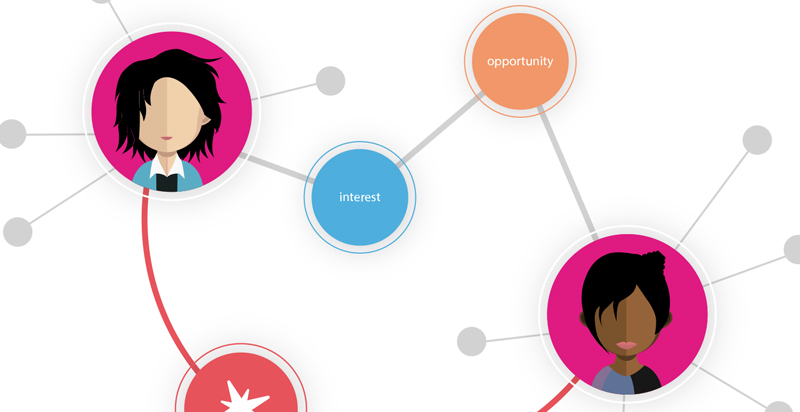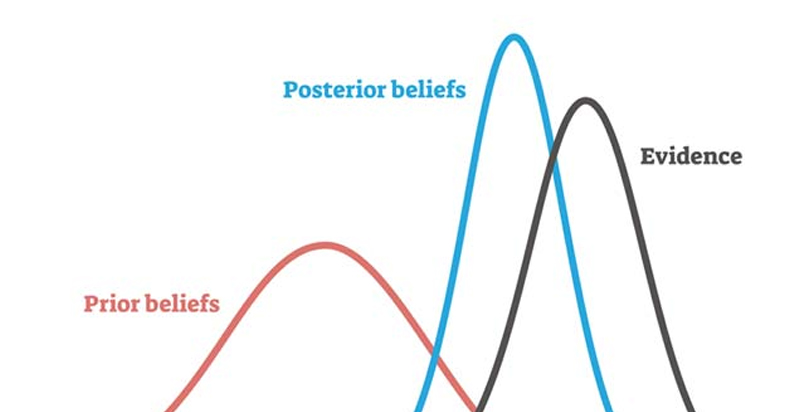Bloor Group CEO Eric Kavanagh chatted with David King, CEO and founder of Exaptive recently. Their discussion looked at the ways in which service-oriented architecture (SOA) has and has not fulfilled it's promise, especially as it applies to working with data. Take a listen or read the transcript.
Read More »Blog
The Best Innovation Management Software for Complex Problems
Some problems are complicated. Finding a solution requires expertise and analysis, but the solution exists. Sky scrapers are complicated. Some problems are complex or even wicked. These problems have no solution. They’re too big, too slippery, too thorny.
Read More »Have you ever read the book Travels with Charley by John Steinbeck? The first part of the book is John Steinbeck talking about his lifelong affliction with wanderlust. I spent a few years living out of a VW camper van, indulging my own wanderlust affliction, so the book quickly claimed a special place in my heart. Steinbeck is such a skilled writer, and he describes the feeling -
Read More »Modern Research: Faster Is Different
Faster is different. It sounds strange at first because we expect faster to be better. We expect faster to be more. If we can analyze data faster, we can analyze more data. If we can network faster, we can network with more people. Faster is more, which is better, but more is different.
Read More »Alleviating Uncertainty in Bayesian Inference with MCMC sampling and Metropolis-Hastings
Bayesian inference is a statistical method used to update a prior belief based on new evidence, an extremely useful technique with innumerable applications. Uncertainty about probabilities that are hard to quantify is one of the challenges of Bayesian inference, but there is a solution that is exciting for its cross-disciplinary origins and the elegant chain of ideas of which it is composed.
Read More »When Earth is Like an Egg: 3D Terrain Visualization
Some of the most satisfying breakthroughs happen when technology gets used in a way it was never intended. While working with our graphic design group at Sasaki on ways to generate a dot pattern for a decorative screen, we came across some open-source software called StippleGen. Stippling is a way of creating an image by means of dots. StippleGen was created to optimize stippling for, among other things, egg painting. The software does a great job of laying out dots with greater density on the darker areas of the image while keeping a comfortable spacing between the dots. What's more, the voronoi algorithm it uses gives an irregular, organic pattern. The ah-ha moment came when I realized this could be applied to a different problem, visualizing terrain; specifically, optimizing terrain meshes in 3D software based off elevation data (a.k.a. Digital Elevation Model (DEM)).
A Data Application to Foretell the Next Silicon Valley?
Can we predict what the next hub of tech entrepreneurship will be? Could we pinpoint where the next real estate boom will be and invest there? Thanks to advances in machine learning and easier access to public data through Open Data initiatives, we can now explore these types of questions.
Read More »Data Science Wanderlust: Analyzing Global Health with Protein Sequences
Fifteen years ago, I had the unique opportunity to go on Semester at Sea, an around-the-world trip on a converted cruise ship that combined college coursework stops at nine countries on four continents. This once in a lifetime trip instilled in me a strong sense of wanderlust and a deep desire to give back to the global community.
Read More »The True Meaning of Catalyst, Crescendo, and Adaptation
People sometimes ask me what our company’s name means and why we chose it. The explanation often leads to discussions about similar but different terms. So I thought I’d use this blog post to explain, hopefully illuminate and while I’m at it, to correct some usage that’s bugged me for some time. Actually, let’s start right there.
I'm not sure where accuracy becomes pedantry, but there are two words - catalyst and crescendo - that instantly make my ears prick up when I hear them, only because I've heard them used incorrectly for long. One is from science and one from music, two things I tend to obsess about.
Read More »Recent Posts
Posts by Author
- AIBS BioScience Talks (1)
- Alanna Riederer (1)
- Austin Schwinn (2)
- Clive Higgins (3)
- Dave King (7)
- Derek Grape (2)
- Dr. Alicia Knoedler (2)
- Frank D. Evans (4)
- Jeff Johnston (1)
- Jill Macchiaverna (9)
- Josh Southerland (1)
- Ken Goulding (1)
- Luke Tucker (3)
- Matt Coatney (3)
- Matthew Schroyer (4)
- Mike Perez (10)
- Sandeep Sikka (1)
- Shannan Callies (2)
- Stephen Arra (1)
- Terri Gilbert (2)
- Tom Lambert (2)
Posts by Tag
- Innovation (19)
- collaboration (19)
- team building (17)
- Data Applications (15)
- Data Science (14)
- collaborate (13)
- new idea (13)
- Data Visualization (12)
- cognitive city (11)
- cognitive network (11)
- teambuilding (11)
- discovery (10)
- thought leadership (10)
- Exaptation (9)
- research (9)
- technology (8)
- Data Exploration (7)
- Platforms (7)
- Data + Creativity (6)
- Text Analysis (6)
- open data (6)
- software (6)
- tech (6)
- Big Data (5)
- Network Analysis (5)
- conference (5)
- ethnographics (5)
- human-computer interaction (5)
- innovation software (5)
- network diagrams (5)
- Communicating About Data (4)
- Dataflow Programming (4)
- Design (4)
- HCI (4)
- Platform (4)
- Rapid Application Development (4)
- artifact (4)
- co-production (4)
- innovation management software (4)
- startup (4)
- use case (4)
- women in tech (4)
- attribute (3)
- entrepreneurship (3)
- ethnographic (3)
- ethnography (3)
- Abstraction (2)
- Data-driven Decision Making (2)
- Machine Learning (2)
- PubMed® Explorer (2)
- User Interface (2)
- algorithm (2)
- entrepreneur (2)
- 3d Visualization (1)
- Financial (1)
- Netflix (1)
- building models (1)
- hackathon (1)
- hairballs (1)
- interdisciplinary (1)
- knowledge graph (1)








